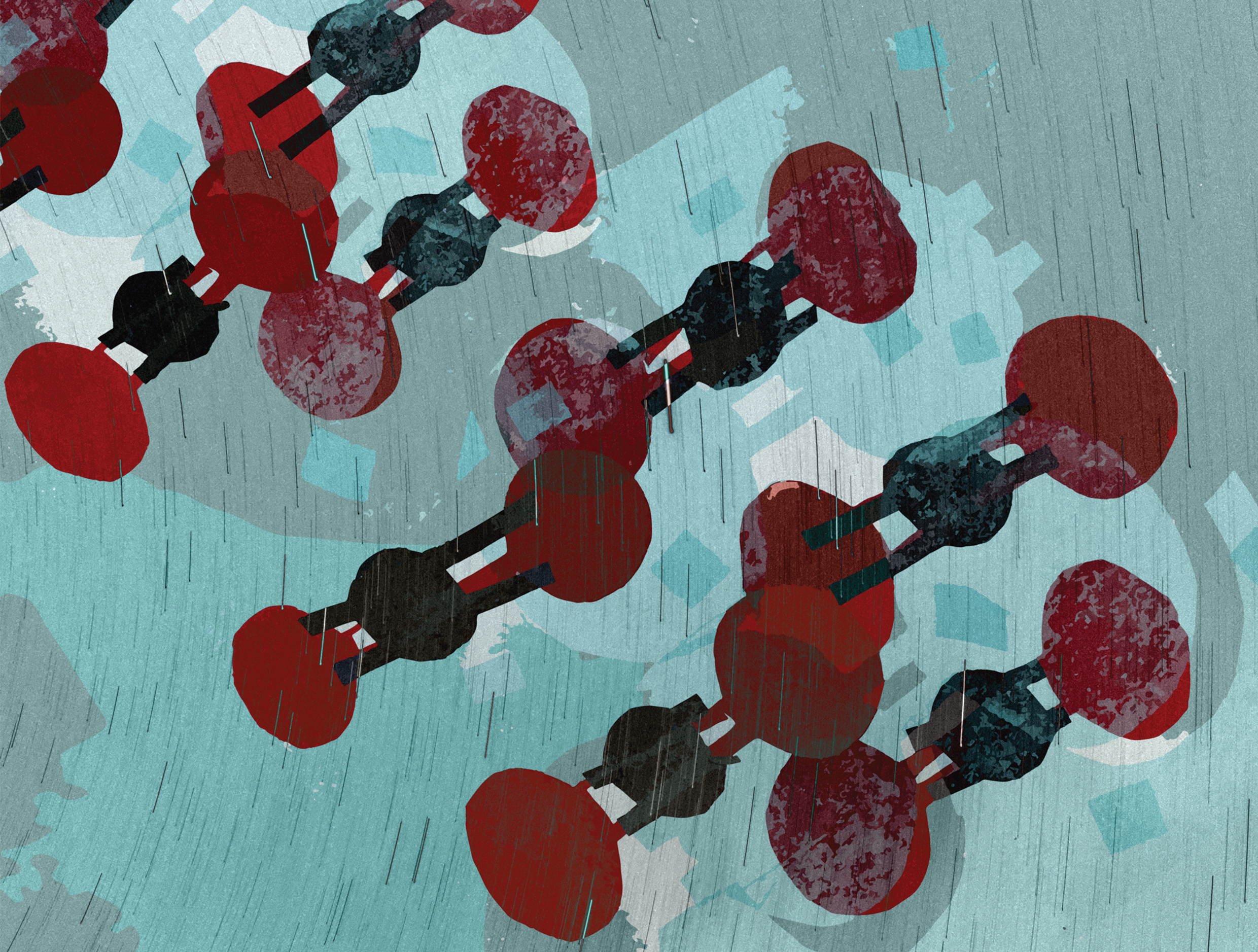Observation of the mechanisms and dynamics of electronic energy relaxation and transfer in molecules exposed to high-energy ultraviolet radiation is vital to understanding their photochemistry. This is particularly important in the fields of astrochemistry, renewable energy, and green chemistry. Interactions between CO2, as a prevalent greenhouse gas in space and the atmosphere, and impurities such as polycyclic aromatic hydrocarbons (PAHs) are of interest because of their implications in these fields.
A recent study authored by Alexander Lemmens, a postdoctoral scientist at Berkeley Lab, investigated vacuum ultraviolet (VUV) excitation of the naphthalene–CO2 complex. An energy transfer process called molecular electronic energy transfer ionization (MEETI) was observed within two molecules for the first time. According to Lemmens, “Even if the process has low efficiency, it may play a significant role in interstellar chemistry.”
The spectral development and fragmentation of CO2 clusters were observed using VUV photoionization mass spectrometry. Beamline 9.0.2 at the Advanced Light Source provided the researchers with tunable VUV light, and mass spectrometry enabled them to distinguish between different cluster sizes. To corroborate the experimental results, density functional theory was used to assign observed features and trends in the excited state spectra of CO2 clusters.
According to Musahid Ahmed, another author and a senior scientist at Berkeley Lab, the most surprising observation of this work was the presence of spectral features indicating CO2 absorption. “Because CO2 would not ionize at the applied wavelength, this meant that CO2 absorbs a VUV photon, transfers that energy to naphthalene, and loses an electron because naphthalene ionizes at much lower energies.”
These findings are important for astrochemical models, suggesting that MEETI could alter the chemical composition of matter in space. This study not only sheds light on the physical and chemical processes of star and planetary formation but also supports the use of supercritical CO2 as an environmentally and climate-friendly organic solvent. Lemmens also highlights that understanding how CO2 interacts with other (organic) molecules could be crucial to developing sustainable chemistry practices.

A.K. Lemmens, A. Wannenmacher, N. Dias, and M. Ahmed, “Electronic energy transfer ionization in naphthalene–CO2 clusters reveals excited states of dry ice,” Chem. Sci. 15, 13631 (2024), doi:10.1039/d4sc03561e.